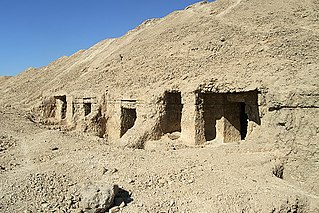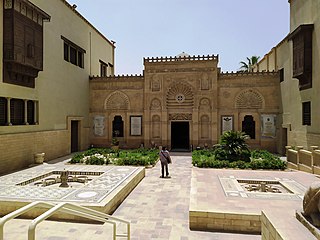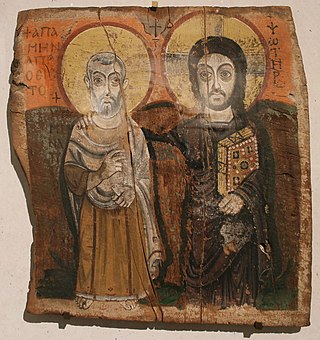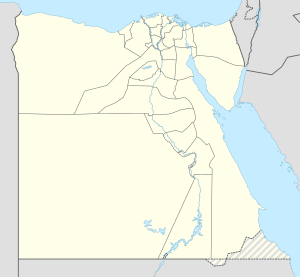
Aswan is a city in Southern Egypt, and is the capital of the Aswan Governorate.

Nag Hammadi is a city and markaz in Upper Egypt. It is located on the west bank of the Nile in the Qena Governorate, about 80 kilometres (50 mi) north-west of Luxor. The city had a population of close to 61,737 as of 2023.

Luxor is a city in Upper Egypt, which includes the site of the Ancient Egyptian city of Thebes. Luxor had a population of 1,333,309 in 2020, with an area of approximately 417 km2 (161 sq mi) and is the capital of the Luxor Governorate. It is among the oldest inhabited cities in the world.

Sohag Governorate is one of the governorates of Egypt. It is located in the southern part of the country, and covers a stretch of the Nile Valley. Since 1960, its capital has been the city of Sohag. Prior to that, the capital was the city of Girga and the name of the governorate was Girga Governorate.

Akhmim is a city in the Sohag Governorate of Upper Egypt. Referred to by the ancient Greeks as Khemmis or Chemmis and Panopolis, it is located on the east bank of the Nile, 6 kilometres (4 mi) to the northeast of Sohag.

Esna is a city of Egypt. It is located on the west bank of the Nile some 55 km (34 mi) south of Luxor. The city was formerly part of the modern Qena Governorate, but as of 9 December 2009, it was incorporated into the new Luxor Governorate.

El Hawawish is the ancient necropolis (cemetery) for the city of Akhmim in the 9th Nome of Upper Egypt (UE09), in modern the Sohag Governorate, Egypt.
El Araba El Madfuna is a town in Egypt. It is located south of Sohag.

Girga, alternatively Digirga or Digurga is a city in the Sohag Governorate of Upper Egypt. It is located on the west bank of the Nile River. It is the metropolitan see of the Coptic Orthodox Church, and is the oldest continuously-inhabited city on the African continent.
Athribis, also known to the ancient Greeks as Triphieion or Tripheion, and to the ancient Egyptians as Hut-Repyt, was an ancient city of Egypt, in the Panopolite nome. The modern villages of Wannina and Nag' Hamad in the Sohag Governorate are situated nearby. It is located some 10 km (6 mi) southwest of the city of Akhmim and about 3 km (2 mi) south of the White Monastery, on the west bank of the Nile.

Kafr El Sheikh is an Egyptian city and the capital of Kafr El Sheikh Governorate, Egypt, about 134 km north of Cairo, in the Nile Delta of lower Egypt. As of November 2006, the town had a population of around 500,000.

El Balyana is a small town in the Sohag Governorate of Upper Egypt. Located on the west bank of the Nile, it is situated near the ancient Egyptian city of Abydos.

Minya Governorate is one of the governorates of Upper Egypt. Its capital city, Minya, is located on the left bank of the Nile River.
El Salamuni is a village in the Upper Egyptian Sohag Governorate. It is located northeast of the city of Akhmim.

Tahta is a city in the Sohag Governorate of Upper Egypt. It is located on the west bank of the Nile in an area known for its agricultural richness. Tahta had a population of 85,528 in the 2017 census. Egyptologists believe that the modern name may derive from the word Ta-ho-ty. Two famous monasteries are located near Tahta, the White Monastery and the Red Monastery. The town has a small but significant Coptic Catholic community. Its most famous resident was the reformist intellectual Rifa'a al-Tahtawi, who was born in Tahta in 1801, and who wrote and translated many books following his trip to Paris in 1826 as the imam and chaplain for the first group of Egyptians whom Mehmet Ali Pasha sent to study in western Europe.

Coptic architecture is the architecture of the Coptic Christians, who form the majority of Christians in Egypt.

The Coptic Orthodox Church of Saint Menas is a Coptic Orthodox church near Coptic Cairo and is one of the oldest Coptic churches in Egypt, dating back to the sixth century.
Saqultah is a small Upper Egyptian city near Akhmim. It is located on the east bank of the Nile, in the Sohag Governorate.

Dar el-Salam is a small Upper Egyptian city near Akhmim. It is located on the east bank of the Nile, in the Sohag Governorate.
Metropolitan Wissa is the serving Metropolitan Bishop of the Coptic Orthodox Diocese of El Balyana, in Sohag Governorate, Egypt. His Diocese encompasses the districts of El Balyana (Abydos), Bardis (district), Awlad Toukh and the villages under their jurisdictions.














































